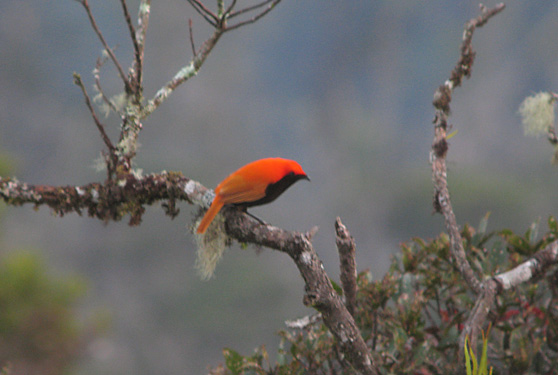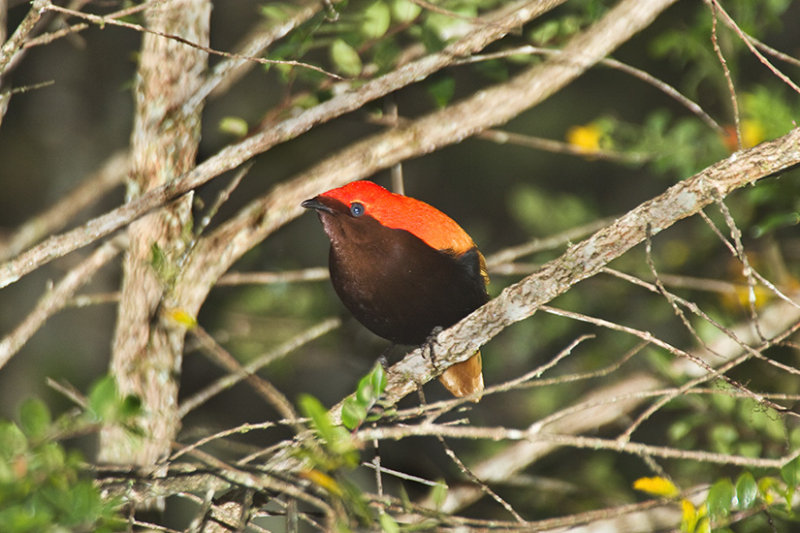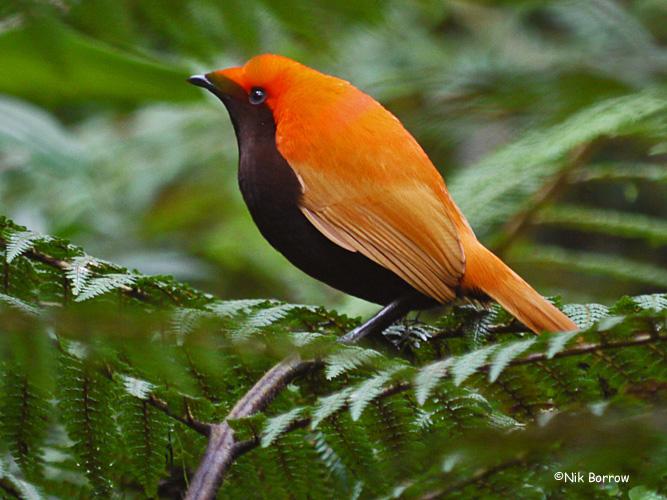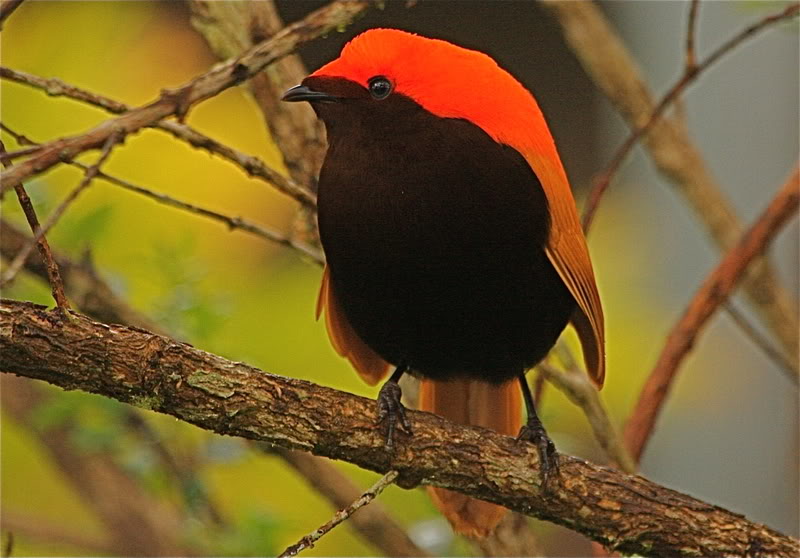
Cnemophilus macgregorii
SUBFAMILY
Cnemophilinae
TAXONOMY
Cnemophilus macgregorii De Vis, 1890, Mount Knutsford, Owen
Stanley Range, British New Guinea. Two subspecies.
OTHER COMMON NAMES
English: Sickle-crested bird of paradise, multi-crested bird of
paradise; French: Paradisier huppй; German: Furchenvogel;
Spanish: Ave del Paraнso de MacGregor.
PHYSICAL CHARACTERISTICS
9.5 in (24 cm); female 0.17–0.28 lb (79–125 g), male 0.20–0.27
lb (90–120 g). Forehead, ear coverts, and upperparts bright
flame yellow with orange wash, dulling in color toward rump
and tail. Bill, lores, and underparts a dark brownish black. Orange
to olive crest, depending on subspecies. Females brownish
olive or brownish gray with darker upperparts.
DISTRIBUTION
Occurs patchily in high forests of the central cordillera of New
Guinea at altitudes ranging from 6,900 to 11,975 ft (2,100 to
3,650 m). C. m. macgregorii: southeast Papua New Guinea
northwestward to at least the Ekuti Divide, east of the
Watut/Tauri Gap; C. n. sanguineus: central and eastern Highlands,
Papua New Guinea, west of the range of the nominate
subspecies.
HABITAT
Upper montane and subalpine forest and forest edge, including
secondary growth and disturbed forest and shrubbery.
BEHAVIOR
A less vocal species than most birds of paradise. The flight of
adult males produces a loud whirring sound. Display season is
likely at least June through November. Mostly frequents middle
and lower forest structure.
FEEDING ECOLOGY AND DIET
Notably exceptional in being an obligate frugivore, both as
adults and nestlings.
REPRODUCTIVE BIOLOGY
Polygynous, with presumed promiscuous males and exclusively
female nest attendance. Breeding at least August through January.
Nest is globular, with side entrance, and sits 6.6–13 ft
(2–4 m) above ground. Incubation is probably about 26 days
or more; nestling period more than 30 days. As only single
nestlings have been observed, clutch is probably one egg.
CONSERVATION STATUS
Not threatened. habitat is more restricted than that of many
family members, but the vulnerability of this bird, common in
optimal habitat, is low because of its higher altitude.
SIGNIFICANCE TO HUMANS
Rarely, skins of adult males are used as human adornment.
Photo Gallery of - Crested bird of paradise




 Animalia Life
Animalia Life